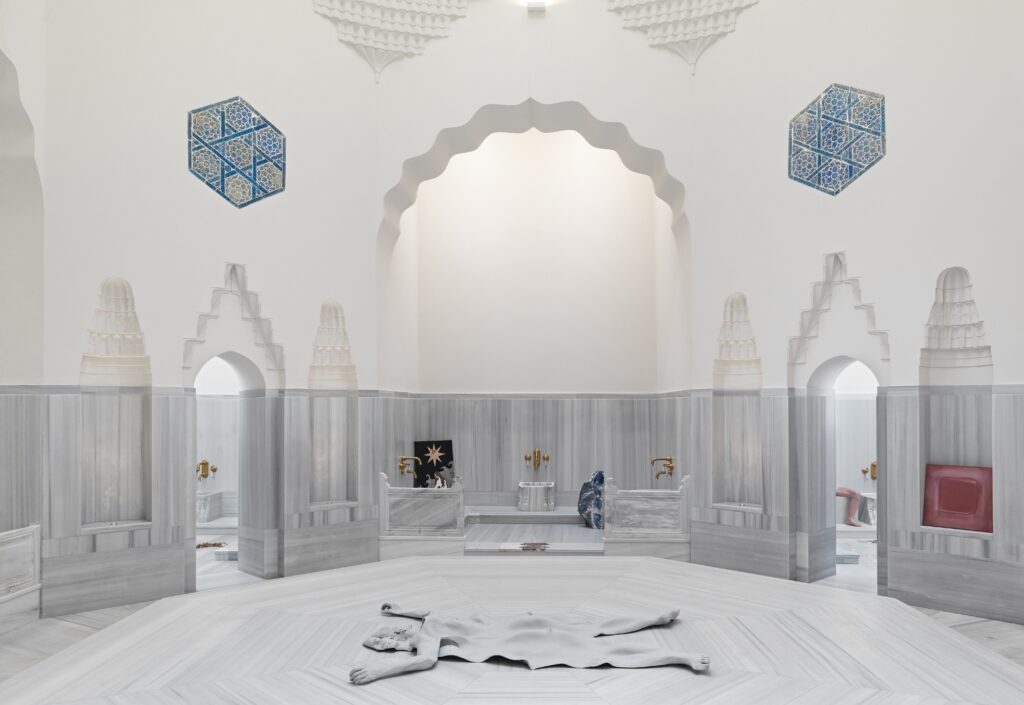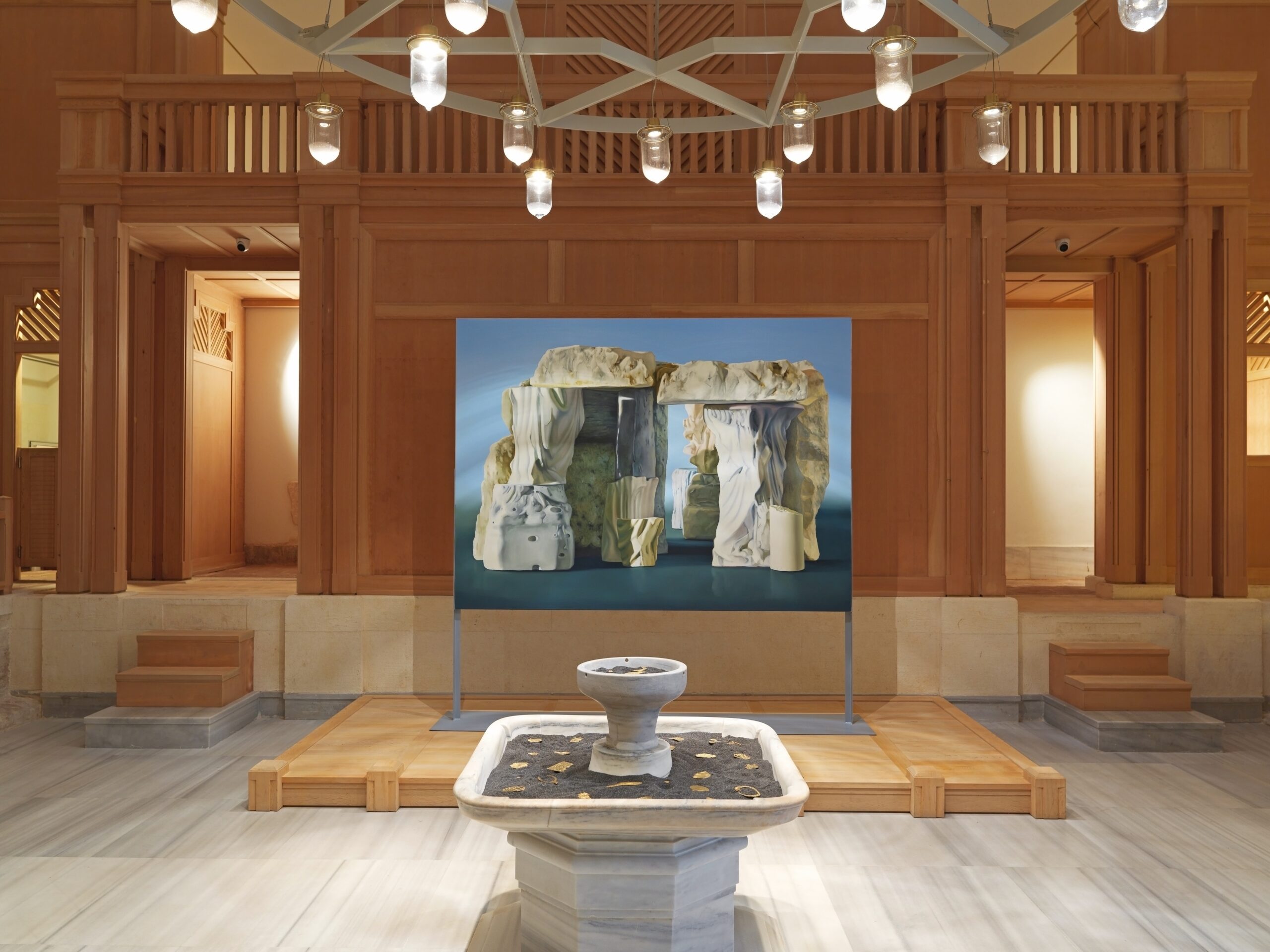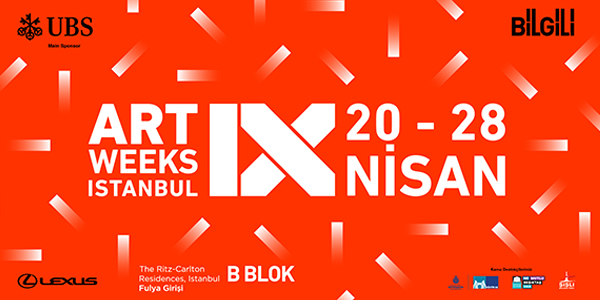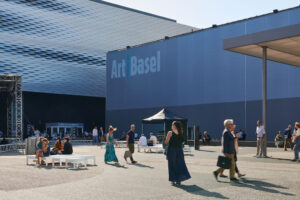Zeyrek Çinili Hamam, dating back to Ottoman Empire, opens after 13-year restoration. The Hamam includes a new museum dedicated to the building’s unique history and the hammam ritual simultaneously. The venue hosts an exhibition titled Healing Ruins, showcasing 22 artists from Turkey and abroad.
Zeyrek Çinili Hamam offers a museum display of Roman, Byzantine and Ottoman artefacts uncovered during excavations. Designed by Atelier Brückner, a floor of the museum is dedicated to the hammam’s blue-white tiles, of which approximately 3,000 fragments have been recovered. New research has revealed that more than 10,000 tiles with thirty-seven unique designs once adorned the inner walls, before many were sold to private collectors and museums across Europe. The museum display also includes a digital interactive experience, a 360-degree view of the bathhouse throughout the 16th century. Also on view will be elaborate objects associated with the hammam ritual, including towels, bowls and Ottoman wooden shoes decorated with precious metals and mother-of-pearl. In addition, the museum provides an insight into the baths’ ingenious water and heating system. Visitors can explore the underground Byzantine cisterns where mysterious naval carvings have been discovered on the walls. In the future, the cisterns will host a rotating program of site-specific art installations.
Healing Ruins exhibition
The first exhibition of the hammam, titled Healing Ruins, curated by Anlam de Coster and showcasing the works of 22 artists from Turkey and abroad. Healing Ruins explores the possibilities for transformation at both an individual and societal level, featuring new commissions that draw inspiration from the layers of the past uncovered by the hammam’s restoration. The exhibition’s title purposefully carries multiple meanings, suggesting not only that ruins are inherently healing, but that the act of repairing ruins might have a transformative effect on us.

Twelve artists were invited to create new site-specific works responding to the history, mythology, and architecture of Zeyrek Çinili Hamam: Francesco Albano, Adrian Geller, Alice Guittard, Başak Günak, Maryam Hoseini, Ahmet Doğu İpek, Lara Ögel, Zoë Paul, Daniel Silver, Panos Tsagaris, Ezgi Türksoy, and Elif Uras. Healing Ruins also features works by Erol Akyavaş, Mehtap Baydu, Hera Büyüktaşcıyan, Dorothy Cross, Candeğer Furtun, Cecilia Granara, Renée Levi, Maude Maris, Ayça Telgeren, and Marion Verboom. The exhibition continues until Nov 5.
Following the exhibition, the baths will be reheated and returned to public use from March 2024. Visitors will be able to enjoy a traditional bathing experience in the historic hammam, known as a ‘double bath’ because of its separate sections for men and women.
About Çinili Hamam
Commissioned by Barbaros Hayreddin Pasha, the Grand Admiral of the Ottoman Navy, the hammam was built in the 1530s by the famed Mimar Sinan at the height of the Ottoman Empire’s cultural brilliance. It was one of the earliest examples of a public space with such an elaborate tiled design, usually the preserve of royal palaces. Conservation work has uncovered and restored many of the original architectural features of this masterpiece which were lost to history, including the intricate tiles which give the bath its name (çinili means tiled). The conservation team have also uncovered lost marvels, such as the beautiful 18th and 19th-century wall paintings which covered the hammam’s walls, hidden under layers of plaster for over two centuries.
Located in the Zeyrek district, part of the UNESCO World Heritage List, the hammam includes a new museum exploring the bath’s history and the traditions of the Ottoman bathing ritual. The site, stretching across 3,000m², also features a space to host site-specific art installations in the newly discovered Byzantine cisterns, and private gardens.













